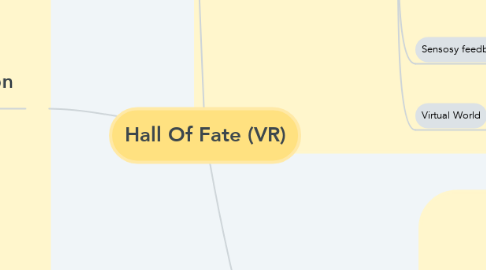
1. IDEAtion
1.1. Abstract
1.1.1. A singleplayer VR game with the elements of RPG, where player discover themselves trapped inside the seemingly endless dungeon. The objective is simple yet not so, find the way out.
1.1.2. Players can navigate via visual aid through dark underground dungeons which surrounded with haunting ghost based on local Malaysian folklore
1.1.3. Players can decide which path they wanted to choose. There will be multiple endings depending on player’s morale. Players can risk themselves, or try to find a clue that can predict the unknown path ahead.
1.2. Problem Statement
1.2.1. Creating an unknown journey filled with constant challenge and curiosity
1.3. Objective
1.3.1. Escape the dungeon without getting killed
1.4. Goals
1.4.1. To spread knowledge about Malaysian folklore
1.4.2. To create an immersive journey with realistic graphic and interesting storyline
1.5. Target Audience
1.5.1. Adult gamer, aged between 18 – 25 years old.
1.6. reference : [tES5: Skyrim] DUNGEON GAMEPLAY!
1.7. Benchmark : Amnesia: The Dark Descent - Scary Gameplay
1.8. Abstracr
2. Elements of Experiential Design
2.1. Interaction
2.1.1. Vr controller pad - move
2.1.2. using both hand controller
2.2. Content
2.2.1. player discover themselves trapped inside a prison inside the seemingly endless dungeon. Players can navigate via visual aid through dark underground dungeons which filled with treasures but is heavily guarded by monsters. There will be traps and puzzles ahead as bonus challenges in the journey.
2.3. Context
2.3.1. subject matter : Malaysian folklore (example : orang minyak).
2.3.2. To spread the knowledge of malay cultures and folklore through RPG
2.4. Emotion
2.4.1. chilling atmosphere
2.4.1.1. Space & Form
2.4.1.1.1. old monuments and ancient architecture
2.4.1.1.2. dungeons
2.4.1.1.3. prisons
2.4.1.1.4. secret chamber
2.4.1.1.5. stone hallway
2.4.1.2. Dim ambience
2.4.1.3. sound effects of someone off the path
2.4.1.4. eeriness of footsteps
2.4.1.5. corpse/skeleton
2.4.2. colors
2.4.2.1. warm, bright colors
2.4.2.1.1. from natural light (e.g fire torch)
2.4.2.1.2. red to signifies danger (e.g blood, red lighting)
2.4.2.2. cool, faint colors
2.4.2.2.1. greenish hue (e.g water)
3. VR Principles
3.1. Immersion
3.1.1. how player combat the ghost
3.1.2. graphically realistic
3.1.3. The context of the ghost fits in the atmosphere
3.2. Interactivity
3.2.1. Traps
3.2.1.1. trap gate
3.2.1.1.1. triggered by stepping on activator (output : lose health)
3.2.1.2. bear traps
3.2.1.2.1. triggered by stepping on (output : lose health)
3.2.1.3. oil lamp
3.2.1.3.1. triggered with fire (output : flame breakout)
3.2.1.4. bear traps
3.2.2. definite in-and-out interactions
3.2.2.1. doors (ceiling/wall)
3.2.2.1.1. intersection between each unit
3.2.2.2. gates
3.2.2.2.1. the main entrance/exit
3.2.2.3. stairs
3.2.2.4. rope
3.2.2.5. triggers (often used for puzzle)
3.2.2.5.1. pistons
3.2.2.5.2. wheels
3.2.3. indefinite in-and-out interaction
3.2.3.1. readable source
3.2.3.1.1. scrolls/letters
3.2.3.1.2. monuments
3.2.3.1.3. books
3.2.3.1.4. internal dialogues
3.2.3.1.5. local maps
3.3. Sensosy feedback
3.3.1. on getting hit
3.3.1.1. red flash screen will appear
3.3.1.2. flinched from pain
3.3.1.3. vibration on controllers
3.4. Virtual World
3.4.1. multiple pathway dungeon

